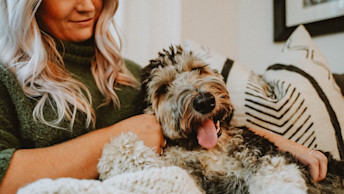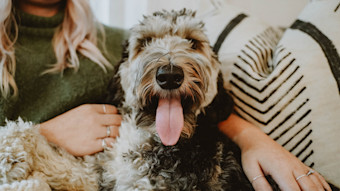August 22, 2025
Should I Crate Train My Dog? What are the Benefits?

Crate training is one of the most effective ways to provide your dog with a safe, comfortable space while also supporting their training and development. If you’ve ever wondered, “Should I crate train my dog?” or “Why crate train a dog?”, you’re not alone. Many pet parents have the same questions. Below, we’ll walk through the benefits of crate training and how it can help both you and your pup.
Why Crate Train a Dog?
A crate isn’t just a containment tool—it’s a cozy den where your dog can feel secure. Dogs instinctively seek out small, enclosed spaces to rest, and a crate taps into that natural behavior. By introducing a crate properly, you’re giving your dog a personal retreat where they can relax and recharge.
The Benefits of Crate Training
Crate training offers a variety of benefits for both dogs and their humans. Here’s why it’s worth considering:
1. A Safe Haven
Dogs thrive on routine and structure. A crate provides a consistent, familiar space where they can feel at ease, whether at home or traveling. It’s their own little sanctuary, free from distractions or stress.
2. Helps with House Training
One of the biggest advantages of crate training is its effectiveness in housebreaking. Dogs naturally avoid soiling their sleeping area, so a properly sized crate encourages them to hold their bladder until they’re let outside. This makes potty training much easier and faster.
3. Prevents Destructive Behavior
Puppies and even adult dogs love to chew, but sometimes they choose the wrong things—like your furniture, shoes, or remote control. A crate keeps them safely contained when you can’t supervise, reducing the risk of accidents or damage around the house.

4. Makes Travel Less Stressful
Whether you’re going on a road trip or a visit to the vet, a crate-trained dog will feel much more comfortable in unfamiliar environments. The crate becomes their safe space, making travel experiences far less stressful for both of you.
5. Supports Emergency Situations
In case of emergencies—such as natural disasters, medical situations, or even a last-minute boarding stay—a crate-trained dog will adapt much more easily to being confined. This can be crucial for their safety and well-being during unexpected events.
Tips for Successful Crate Training
Choose the Right Size: Your dog should be able to stand up, turn around, and lie down and stretch out comfortably in their crate1. Too much extra space can encourage accidents.
Consider Growth: If you have a puppy, choose a crate that will accommodate their adult size. Many crates come with dividers so you can adjust the space as they grow.
Make it Cozy: Add a soft blanket or bed to make the crate inviting. A few safe chew toys can also help keep them occupied.
Start Slow: Begin with short periods in the crate while you’re home, gradually increasing the duration before leaving them alone.
Use Positive Reinforcement: Encourage your dog to enter the crate with treats and praise.
The crate should never be used as punishment—it should always be a positive space for your dog.
Final Thoughts
So, should you crate train your dog? When done correctly, crate training can create a sense of security for your dog while making life easier for you. From house training to travel, the benefits of crate training make it a worthwhile investment in your dog’s well-being.
If you’re ready to start, take it step by step, be patient, and always keep your pup’s comfort in mind. They’ll thank you for it!
“Can a Dog Crate Be Too Big?” SpritDog Training. Accessed January 30, 2025. https://spiritdogtraining.com/behavior/dog-crate-too-big/.



